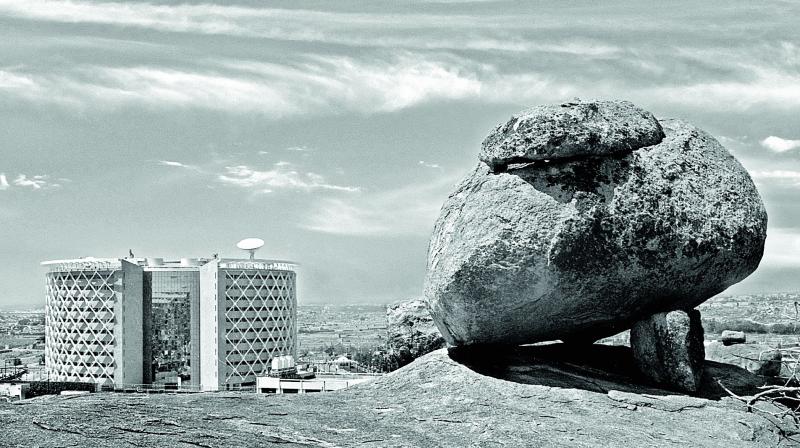Conserving heritage, one click at a time

It’s World Photography Day on August 19. But State Gallery of Art began celebrations a day before, on August 18, by inviting close to 10 photographers to share their perspectives on photography. Given the recent public sentiments about conserving important spaces such as Irrum Manzil Palace, one of the talks on Conservation through Photography by Kommidi Vishwender Reddy, a photographer with over 35 years’ experience aimed to focus on the relevance of photographs as a medium to champion the cause of conservation.
Vishwender, who has also appeared in supporting roles in nearly 65 Telugu, Hindi and Tamil films, has been in the forefront of advocating the importance of photographs to help fight for conservation of heritage structures, monuments and rock formations.
“Photography is a profession with accountability. It is not about just ‘clicking’ because the image should be the result of connecting the mind, soul and emotions. And especially today, photographers carry a huge responsibility of voicing through images important issues like the destruction of one’s neighbourhood, environment and heritage in one’s society,” says Vishwender who learnt photography under the well-known photographer Bandi Rajan Babu.
Images that rock on
Recently, many photographers and activists had managed to stop the razing down of beautiful rock formations near Baba Fakruddin Dargah in Khajaguda. An effort has also gone into protecting the beautiful rock formations in a large tract of land around Edupayalu Jatra area of Medak District.
Reiterating the power of photography in bringing social changes, Vishwender highlighted the advantage of an image in convincing ‘opinion makers’, at the very first sight, about the destruction of any heritage property. “A photograph conveys the gravity of destruction in a very powerful manner. Even a few words or sentences cannot make that impact,” says the photographer who has conducted more than 100 workshops for photo enthusiasts on how to sharpen their skills.
Vishwender then likened the destruction of the universe by destroying rock formations to ‘terrorism’. “In the Deccan Plateau, we have rock formations dating back to 2,500 million years. Rocks have, in the course of years, harboured diverse flora and fauna. The crevices of rocks support important forms of life-medicinal plants, seasonal creepers, varieties of ficus species, insects, etc. Such areas should ideally be turned into recreational spots for tourists,” he adds.
Photographs to save the world
As he ended his talk, the photographer expressed his dismay at the recklessness with which almost every day, there is an attempt to destroy this precious heritage in the name of development. “Destruction of such rock formations has a cascading effect on our environment and can cause changes in the course of underground water, making the region susceptible to high seismic activity and earthquakes. Many stone cutters are victims of life threatening diseases and respiratory problems,” he cautions.
“If greenery is destroyed, there are still chances of replanting it. But once a monument, building or rock formation is destroyed, the damage is permanent,” he laments.

